People who suffer from plantar fasciitis might reel back at the idea of going for a run. These problems are some of the most common causes for heel pain, and are even more common among members of the running community.
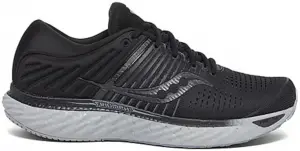
Available for Men at
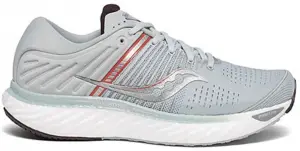
Available for Women at
Many who deal with plantar fasciitis regularly know that the first source of heel pain is right after waking up, after long periods of being prone. However, more frequently pain will occur both during and after a run. Wearing poorly-fitting footwear won’t give you the arch and heel support necessary to relieve this pain.
Plantar fasciitis treatment will often involve routine stretching. However, one of the easiest methods to ease the pain is to wear shoes that will support the heel and arch properly.
The Saucony Triumph is a great example of one of the best running shoes for plantar fasciitis. From one of the leading brands in running shoes, the Saucony Triumph is a wonderful option for those suffering from plantar fasciitis.
Features and Benefits
The Saucony Triumph is a wonderful option for runners overall, not just those suffering from plantar fasciitis. This shoe showcases impressively bold designs and strong color schemes, mixed with enhanced functionality and very extensive comfort. The designs present with the Triumph are some of the boldest across all running shoes, a subset in which Saucony has been a figurehead for many, many years.
Saucony’s Triumph has been touted as Saucony’s most highly-cushioned running shoe ever. This is a wonder to behold, as this brand is well known for its high-density cushioning, perfect for those with plantar fasciitis.
And in our testing, the level of cushioning did not disappoint us. In fact, other than the Hoka One One Bondi (which some would say goes too far), the Triumph was our most cushy of running shoes for plantar fasciitis. Additionally, this advanced cushioning led to a lighter shoe overall, and a snug fit without being painful.
Additionally, the Saucony Triumph provides the exact same eight-millimeter heel-to-toe offset that the Saucony Hurricane provides. These shoes ditch the ISOfit uppers that Saucony had used in the previous five iterations of the Triumph.
That's why the numbering on the Triumph is a bit odd: Saucony released the Triumphs up to the Saucony Triumph 11, then switched to the Saucony Triumph ISO up until the Triumph ISO 5 (which was the 16th iteration of the Triumph for those counting at home). When the ISOfit technology was dropped, Saucony reverted back to the original numbering system; thus, we find ourself at the Saucony Triumph 17 now.
Performance in Our Testing
We at Shoe Guide are known for our rigorous testing procedures. Our selections for the best running shoes for plantar fasciitis were no exception. We put the Saucony Triumph through a series of three separate tests, all taking place across various courses in the Jacksonville, Florida area. Those tests included:
- A flatter route on strong pavement, with terrains ranging from asphalt to loose pebbles, carpeting, linoleum and sidewalks. Goal: a four-mile loop around the perimeter of the Regency Square Mall, one of those miles being a jogging pace.
- A more off-road route, the Spanish Pond Trail, with mud, stocks, debris and plenty of rugged terrains. Goal: Another four miles across environments untested in the flatter route, with a mile at a solid trail running pace.
- An intense stair climbing route, up the 42-floor stairwell of the Banks of America Tower in downtown. Goal: Testing the quality of the shoes over quick turnarounds, damp environments, closed quarters, and rapid inclines.
Here are how these running shoes performed:
In the flat route, the Saucony Triumph excelled in our flatter route course at the Regency Square Mall. They provided ample comfort, as well as a snug fit both indoors and outdoors, regardless of the terrain.
In the off-road route, the Saucony Triumph did great in the off-roading course at Spanish Pond. The only hiccup came with a slight issue on the wet wooden plank boards, but we were quickly able to recover and experienced no pain or injuries as a result.
Finally, in the stair climbing route, the Triumph exceeded expectations. We experienced zero downsides at all, minimal fatigue, and less soreness in our calves afterwards compared with any of the other running shoes tested.
Advantages and Disadvantages
Every running shoe, regardless of their presence or position in our list of the best shoes for plantar fasciitis, have their own unique pros and cons for buyers. This is to be expected, as everyone’s needs are different. No shoe is perfect, and the Saucony Triumph is no exception. Here are some of the advantages and disadvantages we found in our research and testing processes.
Advantages of the Saucony Triumph 17
- The Saucony running shoe was the most well-cushioned and snug model that we tested in our plantar fasciitis pain-relief expedition.
- These shoes are manufactured by Saucony, which is the only developer in our list that focuses completely on running shoes, and they do so very well.
Disadvantages of the Saucony Triumph 17
- The sole’s lighter weight can lead to issues with structural longevity over time.
- Sizing can be tricky, and it was for us. Sizing can run either too large or too small, depending on the “batch” of manufacture. We suggest ordering from somewhere that provides returns.
Our Verdict
The Saucony Triumph is a wonderful running shoe that, with ample cushioning and a nice, snug fit, is perfect for the alleviation of plantar fasciitis flare-ups and pain. Comfort wise, these shoes were unbeatable in our testing and research.
The Saucony Triumph is included in our comprehensive guide to the best running shoes for plantar fasciitis.
Check Latest Prices for Men:
Check Latest Prices for Women:


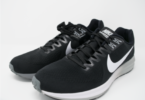
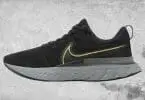
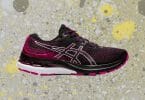
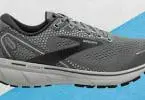
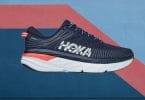
Leave a Comment